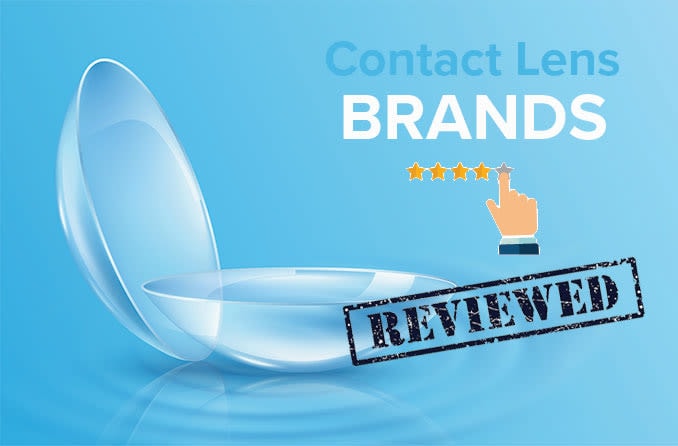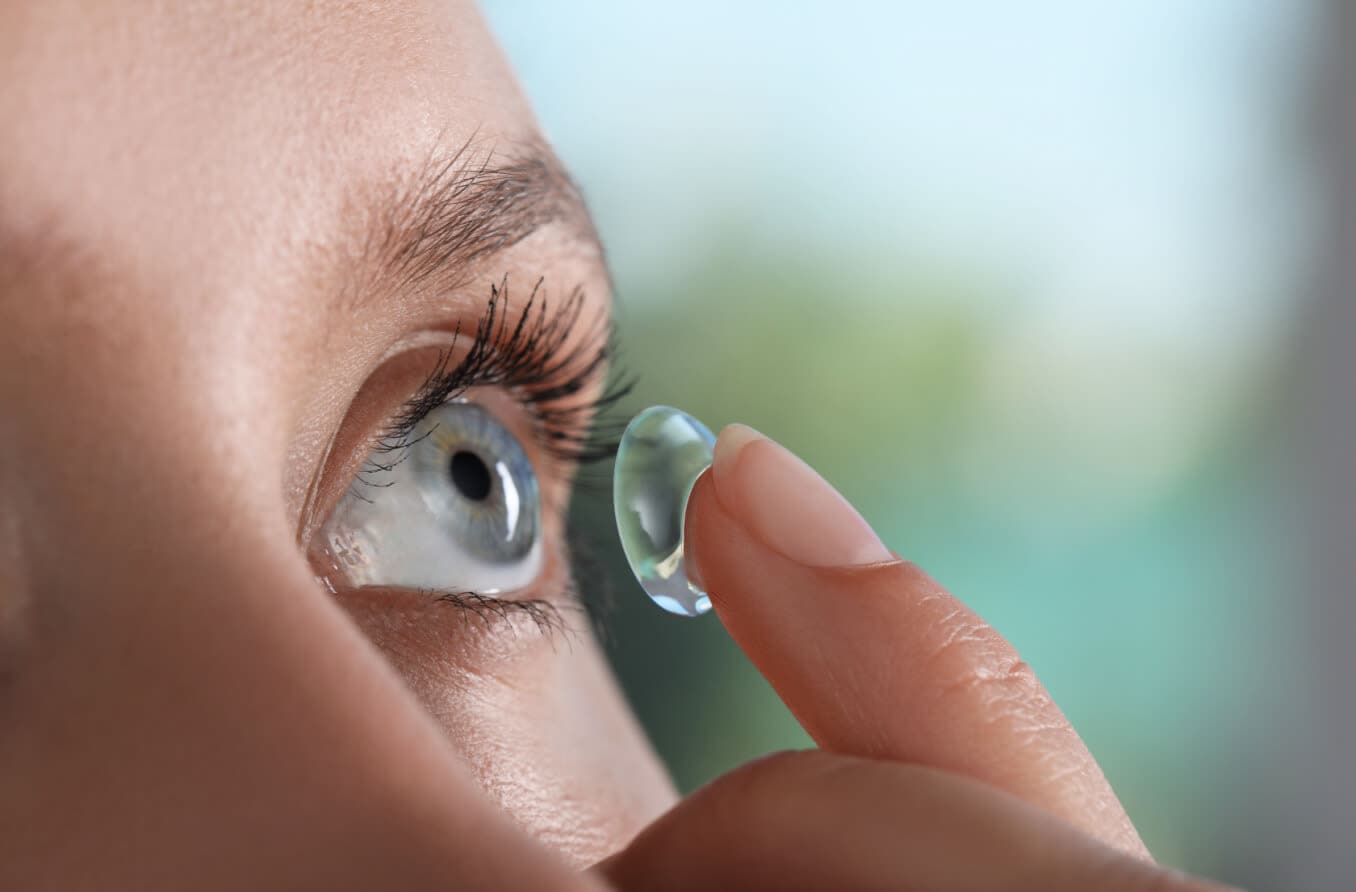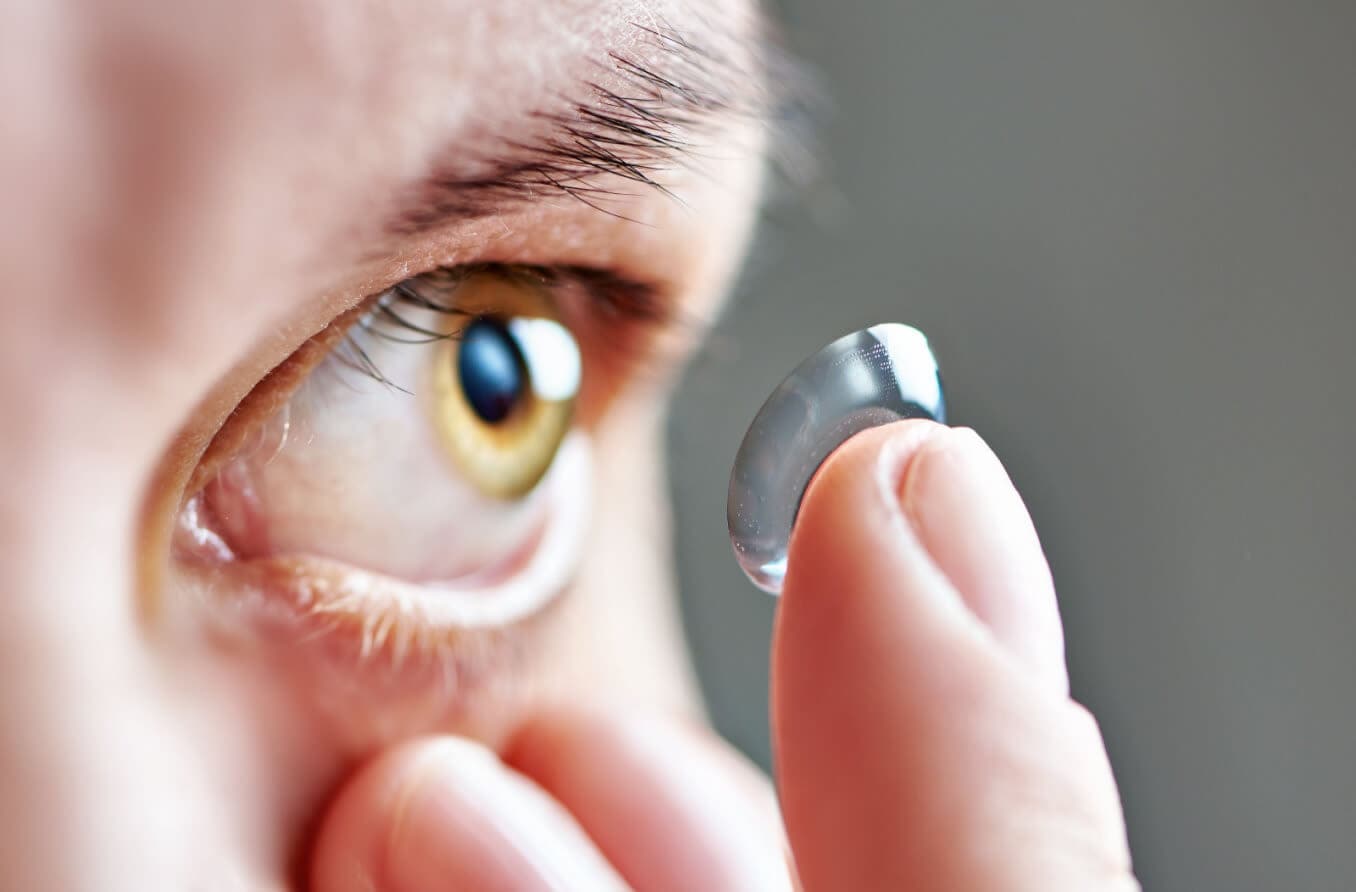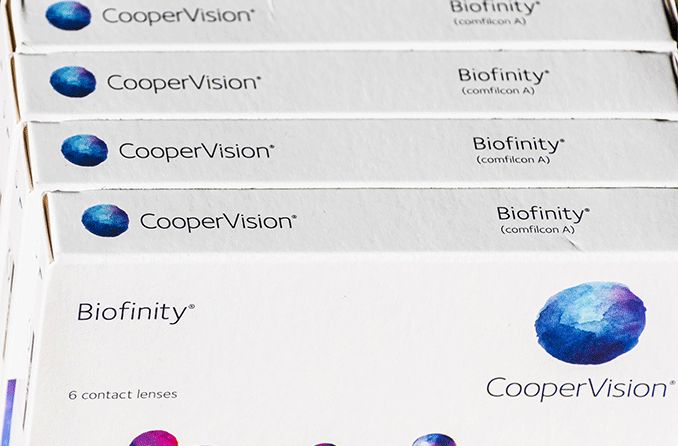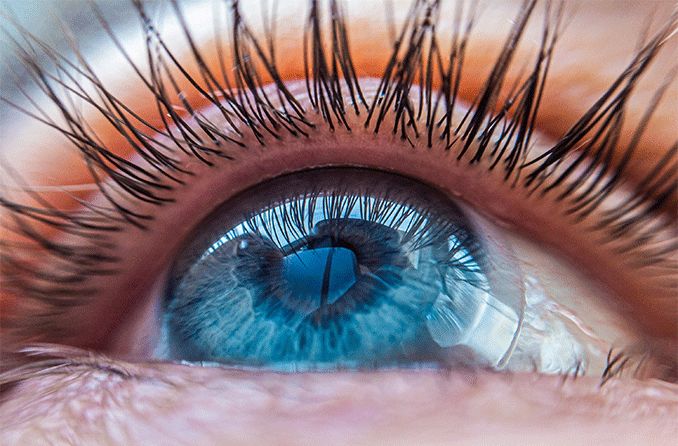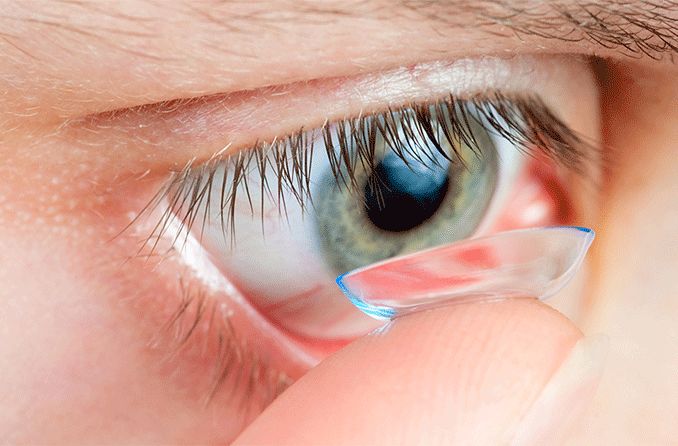Are you over 40? If so, you may want to consider wearing multifocal contact lenses.
So it's no surprise that many people in their 40s and older prefer contact lenses over glasses for their active lifestyles.
Unfortunately, presbyopia makes it harder to focus on near objects as we get older. Reading glasses used to be the only option available to contact lens wearers who wanted to read a menu or do other everyday tasks that require good near vision.
But today, a number of multifocal contact lens options are available to eliminate your need to wear reading glasses over your contact lenses. Multifocal contacts offer the best of both worlds: no glasses, along with good near and distance vision.
Some multifocal contact lenses have a bifocal design with two distinct lens powers — one for your distance vision and one for near. Others have a multifocal design somewhat like progressive eyeglass lenses, with a gradual change in lens power for a natural visual transition from distance to close-up.
Multifocal contacts are available in both soft and rigid gas permeable (RGP or GP) lens materials and are designed for daily wear or extended (overnight) wear. Soft multifocal lenses can be comfortably worn on a part-time basis, so they're great for weekends and other occasions if you prefer not to wear them on an all-day, every day schedule.
For the ultimate in convenience, one-day disposable soft multifocal lenses allow you to discard the lenses at the end of a single day of wear, so there's no hassle with lens care.
In many cases, GP multifocal contact lenses provide sharper vision than soft multifocal contacts. But because of their rigid nature, GP multifocal contacts require some adaptation and are more comfortable if you condition your eyes by wearing the lenses every day.
Hybrid multifocal contacts are another option for clear vision at all distances after age 40. These lenses provide the clarity of gas permeable contacts and the comfort and easy adaptation of soft lenses.
Multifocal contact lens designs
There are two basic types of multifocal contact lens designs: simultaneous vision designs and segmented designs.
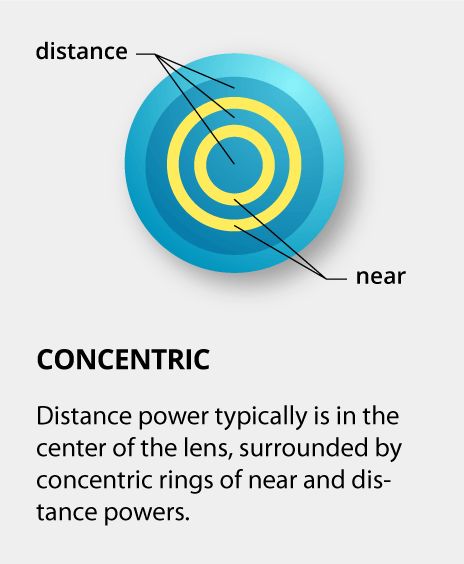

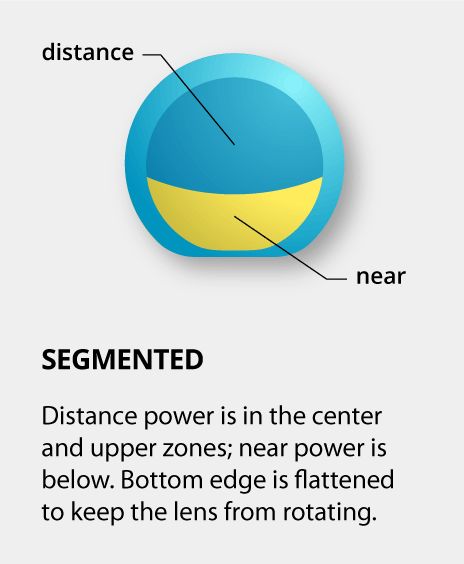
Simultaneous vision designs. In this type of multifocal design, different zones of the lens are designated for far and near (and sometimes intermediate) vision. Depending on the object being viewed, the wearer's determine which region(s) of the lens provide the sharpest vision.
There are two types of simultaneous vision designs:
- Concentric multifocal contact lenses. These multifocal contacts have a primary viewing zone in the center of the lens, surrounded by concentric rings of near and distance powers. The central viewing zone usually is for viewing distant objects (called a center-distance design), but center-near designs also are available. In some cases, a center-distance design is used for the wearer's dominant eye and a center-near design is used for the non-dominant eye.
- Aspheric multifocal contact lenses. These multifocal contacts are similar to concentric multifocal lenses, but instead of having discrete rings of distance and near power surrounding the center of the lens, the multifocal lens power gradually changes from distance to near (or near to distance) from the center to the periphery of the lens. In this regard, aspheric multifocal contact lenses are designed somewhat like progressive eyeglass lenses.
Segmented multifocal designs. Segmented multifocal contact lenses have a design that's very similar to bifocal and trifocal eyeglass lenses. These lenses have a zone for distance vision in the upper and central zones of the lens, with a zone for near vision in the lower half of the lens. The distance and near zones are separated by a visible line in the lenses.
Segmented multifocal contact lenses are made of rigid gas permeable (GP) contact lens material. These lenses are smaller in diameter than soft contact lenses and rest on a layer of tears above the margin of your lower eyelid. When your gaze shifts downward for reading or seeing near objects, a segmented multifocal contact lens stays in place, allowing you to see through the lower, near-correction part of the lens (see illustration).
Segmented trifocal GP contact lenses — which include a small, ribbon-shaped segment for intermediate vision between the distance and near zones — also are available.
Segmented multifocal contact lenses sometimes are called translating multifocal contacts or alternating multifocal lenses.
Astigmatism
In the past, soft multifocal contact lenses could not correct astigmatism. If you had astigmatism, your only choice in multifocal contact lenses was rigid gas permeable lenses.
Today, soft multifocal contacts can also correct astigmatism by using a toric lens design. The lenses achieve the proper rotational positioning on the eye with unequal thickness zones in the lens to create a prism ballast effect (similar to that on a translating GP multifocal).
Hybrid multifocal contact lenses also correct most types of astigmatism.
Monovision
Until you have a contact lens fitting, there's no way to know for sure if you'll be able to successfully adapt to wearing multifocal contact lenses. If multifocal lenses aren't comfortable or don't give you adequate vision, a monovision contact lens fitting may be a good alternative.


